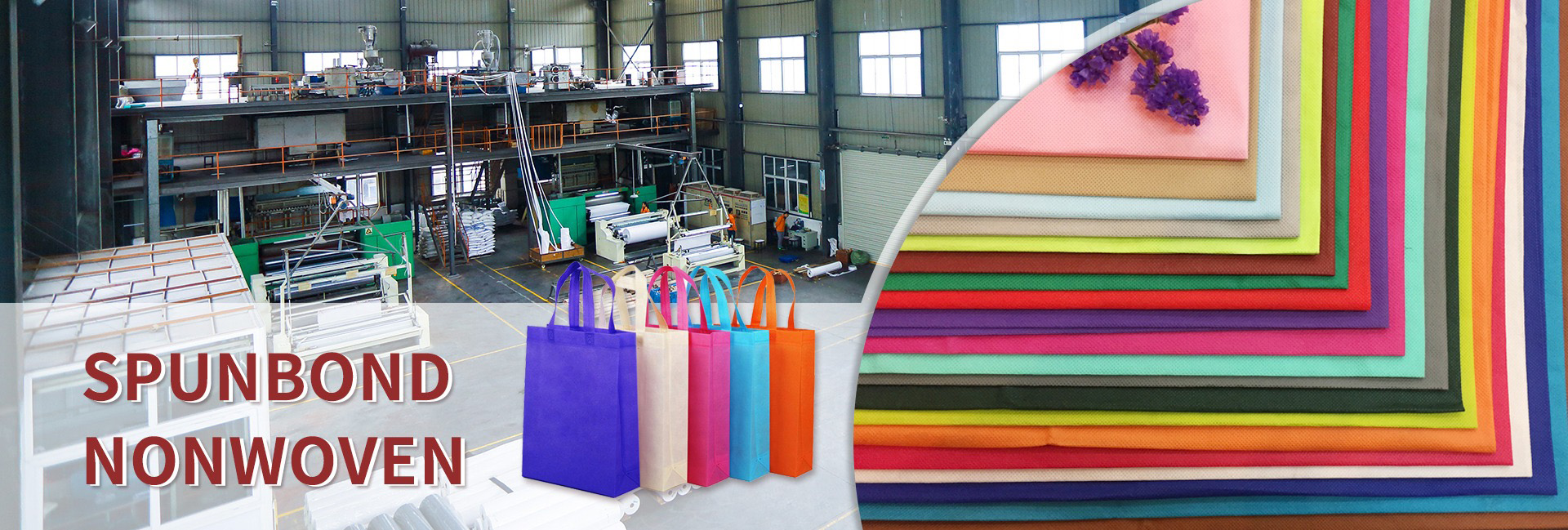In the world of luxury, packaging is more than just a container; it’s the prelude to a brand’s story, the beginning of a luxurious experience, and a silent ritual. However, a quiet “soft revolution” is upending conventional wisdom in this field. Stiff cardboard boxes and complex linings are gradually being replaced by a material with a delicate touch and a refined aesthetic: spunbond nonwovens. This shift isn’t just about a change in materials; it represents a profound fusion of consumer values, brand philosophies, and the pursuit of sustainability.
What is “spunbond nonwovens”? Why has it made its way into the luxury market?
Spunbond nonwovens may sound more closely associated with the industrial and medical fields, but this “fabric” is not the same as the other. Spunbond nonwovens used in luxury packaging are typically made from polypropylene (PP) and formed through high-temperature drawing, web laying, and hot pressing. Its core advantages include:
Excellent Tactility
The surface can be processed to create a delicate texture similar to velvet or silk, providing a warm, skin-friendly “soft touch” that contrasts sharply with the “cold, hard” feel of traditional paper boxes, significantly enhancing the unboxing experience.
Extreme Durability
Combining the flexibility of cloth with the stiffness of paper, it is tear-resistant, abrasion-resistant, and resistant to deformation or damage, ensuring product safety during transportation and carrying, with a lifespan far exceeding that of disposable paper boxes.
Strong Plasticity
Easy to print, emboss, and hot-stamp, it perfectly displays brand logos and exquisite patterns, enabling a high degree of customization without losing the luxurious visual appeal of traditional packaging.
Lightweight and Eco-Friendly: Compared to the complex structures of traditional gift boxes, spunbond nonwoven packaging is extremely lightweight, reducing shipping costs. The material itself is recyclable and reusable, perfectly aligning with the increasingly pressing sustainability mandate of the luxury industry.
The Driving Forces Behind the “Soft Revolution”
This revolution is not accidental, but the result of a confluence of factors:
Sustainability Becomes the New Luxury
The definition of “luxury” is being redefined. A new generation of consumers, particularly Millennials and Generation Z, view environmental protection as a higher level of consumer attitude. They demand that brands demonstrate sustainable commitments in every aspect of their business. The reusable and recyclable nature of spunbond nonwovens makes it a powerful tool for brands to demonstrate their environmental responsibility. A package that can be used as an everyday clutch, storage bag, or shopping bag significantly reduces “disposable” waste and prolongs the emotional connection between brands and consumers.
Creating “Secondary Value” in the Experience Economy
The core of luxury competition has shifted from the product itself to the entire consumer experience. An exquisite, but ultimately discarded, paper box has a fleeting value. However, a high-quality, cleverly designed nonwoven bag can be reused repeatedly. It has evolved from a “packaging” function to a “brand derivative” with practical value, becoming a dynamic advertising and social media symbol, continuously generating exposure and positive brand recognition.
Emotional and Personalized Connections
A soft touch directly evokes an emotional resonance. Opening a luxury item and touching the warm, soft packaging creates a sense of cherishment and care. This sensory experience is more profound and intimate than a visual one. Brands can use design to make nonwoven packaging more relatable, encouraging consumer interaction and building a stronger emotional bond.
Challenges and Future Outlook
Despite its rapid momentum, the “soft revolution” faces challenges. How can spunbond nonwovens rival the ultimate luxury of specialty paper or wooden boxes? How can they strike a balance between the appearance and texture of virgin and recycled materials? These are topics brands must continue to explore.
In the future, we may see:
Material upgrades: The use of more bio-based and biodegradable materials will further enhance their environmental performance.
Technological integration: Incorporating digital technologies like NFC chips and QR codes will make soft packaging a gateway connecting the online and offline worlds, the physical and digital worlds.
Expanding the boundaries of design: From bags to box liners and product protective interlayers, the applications of spunbond nonwovens will become more diverse and systematic.
Conclusion
As the definition of luxury shifts from “ownership” to “experience,” and from “showing off” to “responsibility,” the mission of packaging is also evolving. The “soft revolution” brought about by spunbond nonwovens is a timely response. It’s not a complete abandonment of tradition, but rather, while preserving the essence of luxury, it imbues packaging with sustainable vitality, practical value, and warm emotions. This is not just a revolution in packaging materials; it’s also a new story for the luxury industry as it looks toward the future.
Dongguan Liansheng Non woven Technology Co., Ltd. was established in May 2020. It is a large-scale non-woven fabric production enterprise integrating research and development, production, and sales. It can produce various colors of PP spunbond non-woven fabrics with a width of less than 3.2 meters from 9 grams to 300 grams.
Post time: Oct-24-2025

